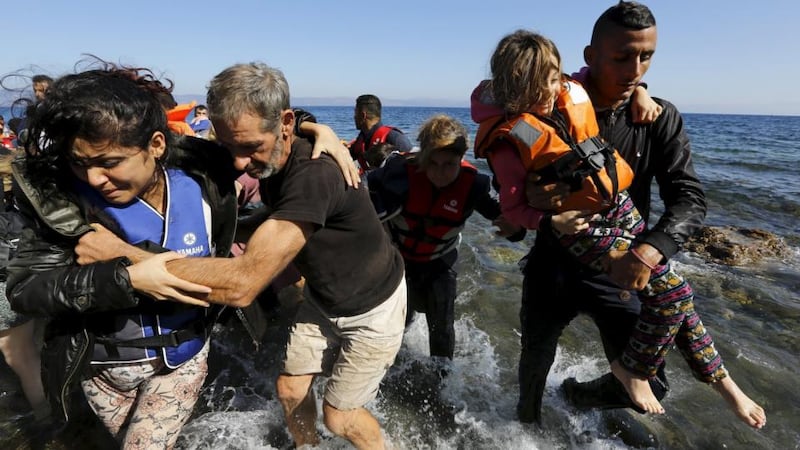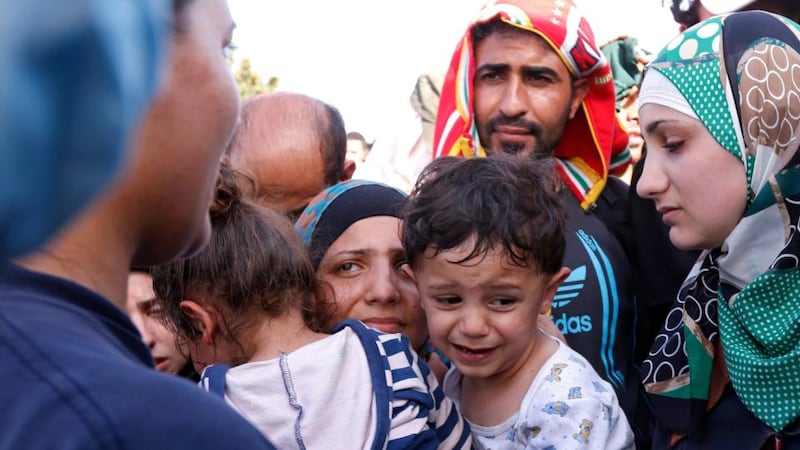Migrant numbers in Europe will continue to build in coming days and their flows may fragment further into new routes, the UN refugee agency said on Friday, urging the European Union to grasp what it termed a last chance to resolve the refugee crisis next week.
UNHCR spokesman Adrian Edwards said a meeting of justice and home affairs ministers on Tuesday and a European Council meeting on Wednesday would be "crucially important".
“These occasions may be the last opportunity for a positive, united and coherent European response to this crisis. Time is running out,” he told a news briefing.


Just over 17,000 migrants have entered Croatia since Wednesday morning after Hungary sealed its border with Serbia, of whom more than 3,000 have crossed into Hungary, Croatian interior minister Ranko Ostojic said on Friday.
Police gave the exact total as 17,069, but more migrants were streaming over the Serbian border into Croatia by the hour.
The UNHCR has been criticised, including by former staffers and humanitarian policy experts, for not being assertive enough in opening doors in Europe, as it has done in past crises, including the exodus from Hungary in 1956.
“The conditions right now in southeast Croatia are seriously worrying. We’ve had 13,000 people at least who have come across as of about 8 or 9 o’clock this morning. There was very little help on hand,” Mr Edwards told Reuters.
He said the EU had failed to get a grip on a manageable problem. Closing borders had diverted flows of refugees from Hungary, where authorities used tactics that the UN has called “callous and xenophobic”, to Croatia.
"If routes become blocked in one place you will unquestionably see people moving to routes elsewhere. We have already seen instances of people arriving in Brindisi in Italy from Turkey. You may see more people coming across on the Libya-Italy route. Closing borders really doesn't resolve anything at all, it simply pushes it elsewhere."
Mr Edwards said UNHCR was closely watching the situation in Slovenia, Austria and Croatia, but the pressure could also return to Serbia if migrant numbers back up there.
“As you push people in different directions it becomes much harder to manage because it’s going in multiple different routes.”
Asked if UNHCR could help to arrange trains to take refugees straight through Hungary and Austria to Germany, he said UNHCR wanted a collective European response rather than a "gravitation towards one country or two countries where the situation might ultimately become unmanageable."
Joel Millman, a spokesman for the International Organization for Migration, warned that Europe's failure to resolve the situation risked returning the continent to the rivalry that led to the second World War.
“It’s very similar to what happened in the 1920s in Europe when the beggar-thy-neighbour policy on trade pitted countries against each other and led to the war. We fear that something similar is happening now with the kind of hardening of borders and as a response to Germany’s decisions.”
Migrants continued to stream into Croatia from Serbia on Friday, walking through fields around one of seven road border crossings that Zagreb closed after an influx of some 11,000 people in two days.
Croatia announced late on Thursday it had closed almost all road crossings from Serbia, saying it could not take in any more migrants.
But the flow continued unabated on Friday morning as migrants arrived by bus in the Serbian border town of Sid and walked through cornfields to cross the border, joining huge crowds controlled by Croatian police.
Hungary began construction of a 41km- long fence on the Croatian border in a bid to stop refugees from illegally entering the country after their route shifted from the Serbian-Hungarian frontier, prime minister Viktor Orban said in an interview on MR1-Kossuth radio.
“We must implement the same measures as on the Serbian-Hungarian border,” Mr Orban said, adding that at this point 600 soldiers had worked on the fence, and a further 500 will be deployed on Friday and 700 more over the weekend.
Slovenia, like Hungary, appeared unwilling to take in the flow, with Slovenian police saying those arriving from Croatia would simply be sent back there, according to the country’s state news agency.
Croatian president Kolinda Grabar Kitarovic called on the military to be on higher alert and to act if needed to protect the border from the entry of refugees.
After bus trips through Serbia, many migrants crossed fields on foot to enter Croatia, where dozens of police at first directed them to trains and buses heading to refugee centres.
Authorities warned them to avoid walking in areas along the Serbian border, where there are still mines left over from the Balkan wars.
Hungary has faced strong international condemnation for its handling of the crisis.
UN secretary general Ban Ki-moon called its use of water cannons, tear gas and baton-wielding riot police unacceptable.
Hungarian foreign minister Peter Szijjarto rejected the criticism.
“I find it bizarre and shocking that certain esteemed international figures have stood on the side of people who for hours were throwing stones and pieces of cement at the Hungarian police,” he said.














